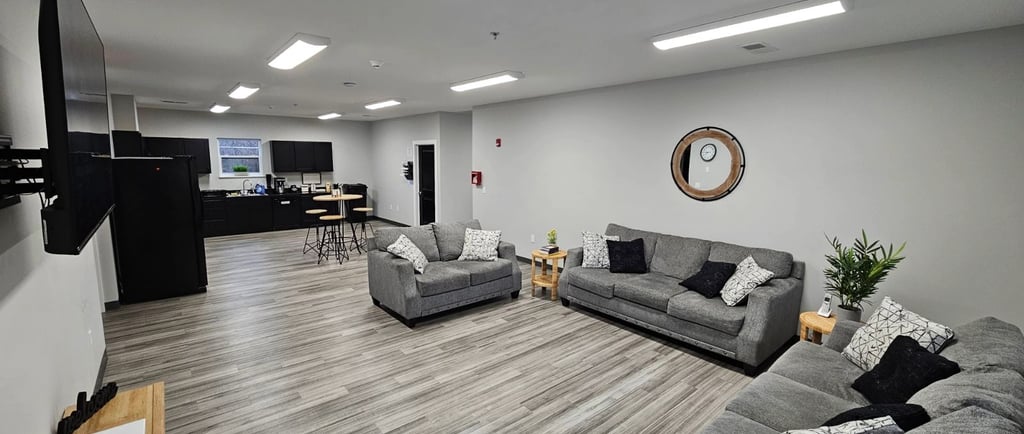Moving Forward Recovery Housing
Title: The Crucial Role of Recovery Housing in Achieving Long-Lasting Sobriety!
SOBER LIVINGADDICTION CENTERRECOVERY HOUSING
1/13/20242 min read
Introduction: Recovery from addiction is a challenging journey that requires a comprehensive and supportive approach. While overcoming the initial hurdles of detoxification and rehabilitation is a significant achievement, the transition back into everyday life can be a delicate and crucial phase. This is where recovery housing plays a pivotal role in ensuring long-lasting sobriety.
Understanding Recovery Housing: Recovery housing, also known as sober living homes or transitional housing, provides individuals in recovery with a supportive and substance-free environment. These homes are designed to bridge the gap between intensive treatment programs and independent living. Here, residents can continue their journey towards sobriety with the necessary structure, accountability, and peer support.
The Importance of Accountability: One of the key factors contributing to the effectiveness of recovery housing is the emphasis on accountability. Residents are expected to adhere to house rules and regulations, which often include regular drug testing, attending support group meetings, and actively participating in house chores. This structured environment fosters a sense of responsibility and discipline, essential elements for sustained recovery.
Community Support and Peer Interaction: Isolation can be a significant challenge for individuals in recovery. Recovery housing addresses this issue by creating a sense of community and encouraging peer interaction. Sharing experiences, challenges, and victories with others who are on a similar journey can provide invaluable emotional support. The camaraderie formed in these settings often leads to lasting friendships that extend beyond the confines of the recovery house.
Transitional Support: Recovery housing serves as a transitional space for individuals reintegrating into society after completing formal treatment programs. This transitional support is crucial, as it helps residents navigate the challenges of daily life while maintaining their commitment to sobriety. Learning to manage stress, relationships, and responsibilities in a controlled environment sets the foundation for long-term success.
Structured Routine and Stability: Consistency is key in recovery, and recovery housing provides a structured routine that promotes stability. Daily schedules often include group therapy sessions, fitness activities, and vocational or educational pursuits. Establishing and maintaining a healthy routine helps individuals build a strong foundation for long-lasting recovery.
Reducing the Risk of Relapse: The risk of relapse is a constant concern for those in recovery. Recovery housing acts as a safeguard against relapse by creating an environment where triggers and temptations are minimized. Residents are surrounded by like-minded individuals who share the common goal of maintaining sobriety, creating a positive and supportive atmosphere that discourages substance use.
Conclusion: In the journey towards long-lasting sobriety, recovery housing plays a crucial role by offering a structured, supportive, and accountable environment. By addressing the challenges of reintegration into everyday life, fostering community support, and providing transitional assistance, recovery housing significantly enhances the chances of sustained recovery. It is an indispensable component of the comprehensive approach needed to combat addiction and build a foundation for a healthier, substance-free future.
Email: Info@movingforwardresidential.com
Phone: 740-858-6683


Recovery - Sober Living Application






